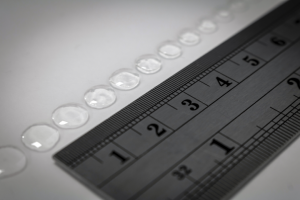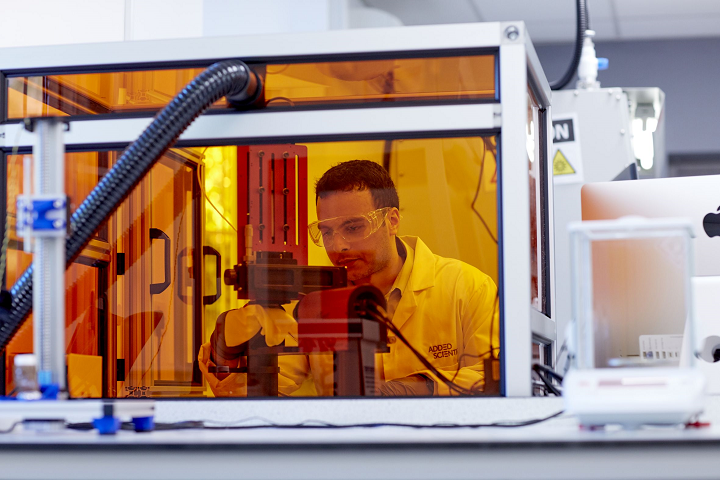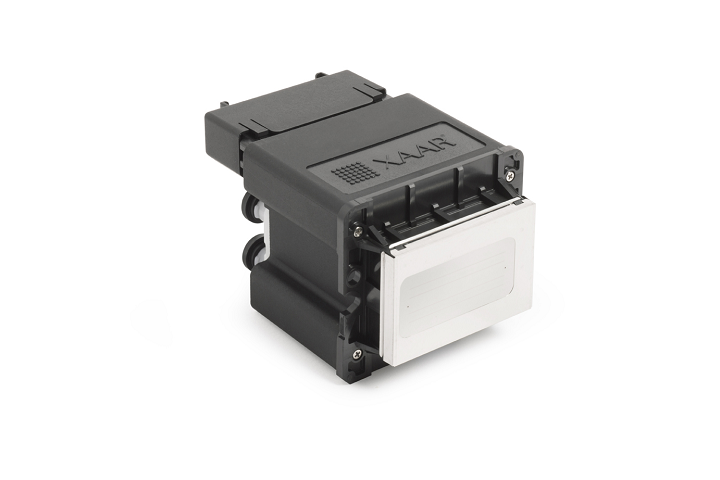Added Scientific creates the first 3D printed magnetic-optical trap chamber
Added Scientific Used Xaar Printhead in Pilot Project for 3D Printing Personalized Pharmaceuticals
Cambridge-based company Xaar may have had its start in developing piezoelectric, drop-on-demand industrial printheads, but transitioned to the 3D printing world back in 2014 when it helped develop the high speed sintering (HSS) FACTUM 3D printer. Xaar is also a leading developer of digital inkjet printing technology, and is currently helping research organization Added Scientific, headquartered in Nottingham, as it works to determine how suitable inkjet printing is in fabricating personalized pharmaceuticals.
Added Scientific, a spinoff company from the University of Nottingham, is using Xaar’s 1201 printhead to bring personalized medicine, with dosages tailored to individual people on an industrial scale, just one step closer to reality.
Craig Sturgess, Research Manager for Added Scientific, said, “Inkjet printing offers the ability to digitally control the printing with its precision placement of tiny droplets a few picolitres in size and the capability to place multiple materials to create complex multi-functional objects in 2D & 3D.
 The project was initiated by Added Scientific with its collaborating partners Xaar and global pharmaceutical company AstraZeneca and funded under the UK government’s Industrial Strategy Challenge Fund’s Medicines Manufacturing Challenge, with additional support from Innovate UK. They’re building on research previously conducted at the university regarding the development of excipients: everything but the active pharmaceutical ingredient (API). This pilot project is looking at the long-term suitability and scalability of using inkjet printing to dispense APIs.
The project was initiated by Added Scientific with its collaborating partners Xaar and global pharmaceutical company AstraZeneca and funded under the UK government’s Industrial Strategy Challenge Fund’s Medicines Manufacturing Challenge, with additional support from Innovate UK. They’re building on research previously conducted at the university regarding the development of excipients: everything but the active pharmaceutical ingredient (API). This pilot project is looking at the long-term suitability and scalability of using inkjet printing to dispense APIs.
“Trial research carried out previously has shown that inkjet offers a real potential for printed medicines. This project was designed to answer questions pharmaceutical companies have around the suitability of inkjet printing in dispensing APIs at a scale that made both manufacturing and economic sense,” Sturgess continued.
The project partners used the Xaar 1201 printhead with one of the university’s formulations to evaluate its impact on the API, in addition to how well it can operate under Good Manufacturing Practice (GMP) conditions. GMP is the de facto standard for manufacturing in the pharmaceutical industry. They also studied if the formulation had an effect on the life of the printhead, and rounded out their experimental trials by evaluating AstraZeneca’s data from conventional tablet manufacturing against inkjet printing process times.
“The Xaar 1201 is ideal for a wide range of industrial applications including Advanced Manufacturing due to its ability to print fluids with a range of viscosities, reactivity and conductivity. This pilot project has demonstrated the Xaar 1201’s versatility for pharmaceuticals and how inkjet printing is proving itself to have the potential to drive innovation as well as efficiencies in many areas of 21 st century life,” stated Mike Seal, Business Development Manager, Advanced Manufacturing, at Xaar.
The results from the team’s project showed significant time saved in unit process times from inkjet printing in comparison to conventional manufacturing methods. Production trials consisted of 1,000 dosage forms printed in batches of 100, and no issues or interaction with the API occurred in Xaar’s 1201 printhead; additionally, there was no impact on the life of the printhead itself.
“These are exciting times. Our project has clearly shown that printing personalised medicines – with all their advantages of dose and design freedom – is no longer just a theory, but a scalable and economic reality for pharmaceutical companies and we look forward to extended trials to confirm these findings,” Sturgess concluded.
Added Scientific and its project partners are certainly not the first to investigate the idea of using 3D printing to fabricate personalized medication, and I doubt they will be the last. However, inkjet printing is not typically used to make 3D printed medication, so it will be interesting to see what the team’s next steps will be.
Discuss this story and other 3D printing topics at 3DPrintBoard.com or share your thoughts in the Facebook comments below.
[Images: Xaar]


